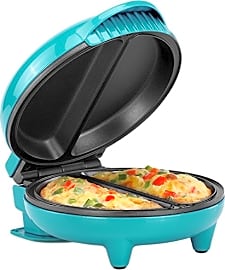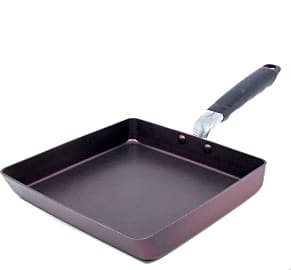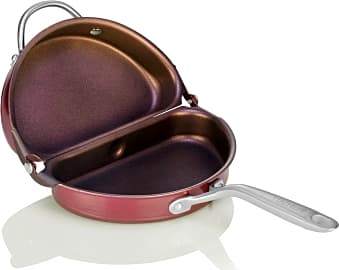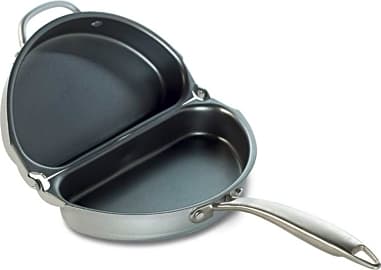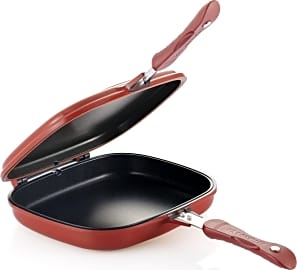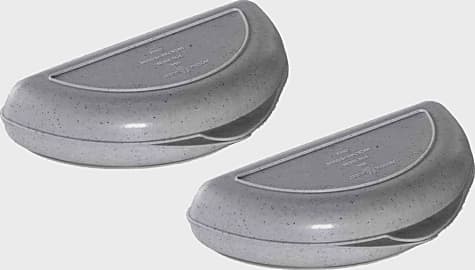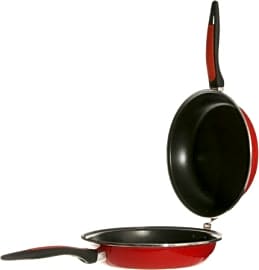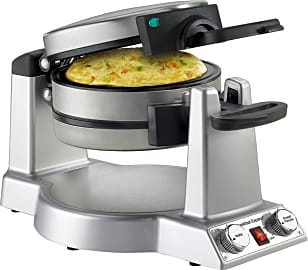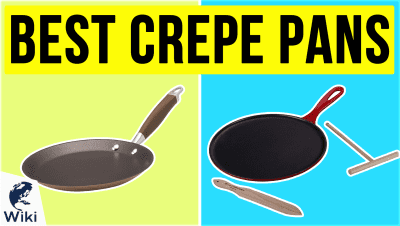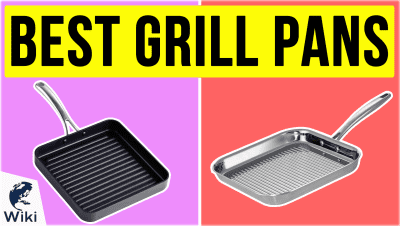The 10 Best Omelette Pans

This wiki has been updated 43 times since it was first published in May of 2016. There may be no better way to start your day than with a delicious and nutritious omelette — but get the flip wrong and it's a recipe for having to clean up a massive spill. These pans are deigned to make it a cinch to enjoy your eggs every time, by taking at least some of the tricky work out of the process. We've included both electric and stovetop models, so there's one for any preference. When users buy our independently chosen editorial selections, we may earn commissions to help fund the Wiki.
Editor's Notes
July 13, 2019:
Because it's durable, simple to use, and versatile, we still like the Cuisinart 10-Inch as a top pick at this time. The set comes with two pans that are dishwasher friendly, non-stick, and safe for the oven at up to 350 degrees Fahrenheit. Plus, the handles stay cool to the touch. And speaking of handles, we still like both the Nordic Ware Italian and Techef Standard, but both feature a smaller handle that heats up quickly — so keep a good pair of oven mitts handy. For those who can't or prefer not to cook an omelette on the stove, we've kept a Holstein Housewares electric model and the Lekue Spanish. The Holstein Housewares version has many benefits, including a non-slip base and upright storage, but it does take some effort to clean. The Lekue model is a snap to wash and store; in fact, it's so hassle-free that you could even pop it into your suitcase for travel, although it does require that there's a microwave wherever you intend to use it.
Interesting Facts About Omelettes
One such notable example was the record-breaking omelette cooked in Yokohama, Japan in 1994.
There is no question that omelettes are one of the most popular breakfast staples in the world. Despite being such a popular dish however, much of its history is unknown. In fact, historians can't quite agree on which culture to credit with the invention of the omelette. Some believe the French were the first to create the dish because the word sounds very similar to the French word "amelette," which means blade, and omelettes have a shape similar to a blade. Others believe omelettes may be Roman in origin because of their similarity to an old egg and sweetened honey dish called “ovemele,” which also sounds similar to the modern word omelette.
If you think that you are a fan of the modest yet elegant omelette, your preference towards them probably pales in comparison to Napoleon Bonaparte's. According to some rumors, he was served his first omelette while passing through a small French village with his army. He enjoyed the meal so much that he requested the villagers muster up every egg they could find in order to serve his entire army omelettes the next morning.
While on the topic of feeding an army with omelettes, lets take a look at some omelettes that were so large, only a single one would be needed to feed a regiment of soldiers, if not more. One such notable example was the record-breaking omelette cooked in Yokohama, Japan in 1994. It was made with a reported 160,000 eggs and measured 1,383 square feet. Though that feat is certainly amazing, it is by no means the largest omelette made to date. In 2002, members of the Canadian Lung Association in Ontario, Canada cooked a 6,500-pound omelette, gaining the record for themselves. Their title was short lived, however, as just a mere five years later, a 7,000-pound omelette was made in Cape Town, South Africa. Currently, the City Council of Santarém, Portugal holds the record for the world's largest omelette. Weighing in at 14,225 pounds, it required 145,000 eggs and 880 pounds of oil to produce.
The Many Different Kinds Of Omelette Pans To Choose From
Some experienced chefs may be able to create the perfect omelette in a traditional saute pan, but for the rest of us, we need a little help. There is probably no aspect of making an omelette more difficult than mastering the dreaded flip. It is at this stage that the majority of us wind up destroying that beautifully crafted, egg-based masterpiece, and instead wind up with something more akin to scrambled eggs. Luckily, somebody along the way came up with the idea for omelette pans that do all of the work for you. Depending on the model, it either makes flipping your culinary creation simple and risk-free, or eliminates the need to do so entirely.
If you are often in a rush in the morning, and would rather skip the stove entirely, then you would be better off looking at one of the microwaveable options.
When picking an omelette pan, you have a couple different styles to choose from. If you have a preference for pancake-style, round omelettes, there are models designed specifically for this. They will be made of two interlocking pans that allow you to seamlessly flip your omelette from one to the other, without worry of breaking it. This style is a great choice for somebody who prefers multi-functional items in their kitchen, as once separated, they can be used just like regular saute pans. If you prefer a folded omelette, like you get at your favorite breakfast restaurant, there are models designed for this, as well. These consist of two half moon-shaped pans in which you cook eggs in both simultaneously. One side will also contain your omelette's fillings. When your eggs are firm on the bottom, but still slightly liquid on top, you flip the egg-only side closed on top of the other and finish cooking.
If you are often in a rush in the morning, and would rather skip the stove entirely, then you would be better off looking at one of the microwaveable options. To use one of these, you simply pour in some beaten eggs along with your filling, and pop it in the microwave for a couple of minutes. In no time at all, you'll have a nice, fluffy omelette ready to eat. There are also some completely self-contained electrical models available. These look and function just like waffle makers. Simply plug them into the wall, wait for the indicator light to let you know the pan is hot, and then add your eggs and filling. Whichever kind you choose to go with, they all have one important thing in common — they make cooking omelettes a hassle-free experience.
Tips For Making The Perfect Omelette
There is no doubt that getting an omelette pan will make creating a restaurant-quality breakfast easier, but there are still a few tips you should follow to ensure you get a perfect omelette every time. First, start with your mise en place. That means preparing and organizing all of your ingredients in advance. All of your filling ingredients should be chopped, shredded, or whatever else needs to be done to them, long before your eggs ever touch the pan.
If you let them sit for too long after beating them and before cooking, you'll lose a lot of the air and volume you've worked so hard to add.
Let's take a moment to talk a little more about toppings while we are on the subject. Any raw toppings should be cooked. This includes vegetables as most release water when cooked, which could potentially ruin an omelette if released into the eggs. Any ingredients that have been refrigerated should be allowed to come to room temperature. If you are in a rush, you can put them in the microwave for a short period of time. Your eggs should also be at room temperature, so take them out of the refrigerator at least 30 minutes before you plan on making your omelette.
Beat your eggs just before adding them to the pan, and always use a whisk. Beating eggs aerates them, which will help the end product come out light and fluffy, and whisks add more air than a fork can. If you let them sit for too long after beating them and before cooking, you'll lose a lot of the air and volume you've worked so hard to add. By following these simple tips, you'll never again be disappointed by what comes out of your omelette pan.


